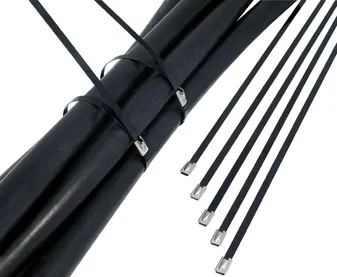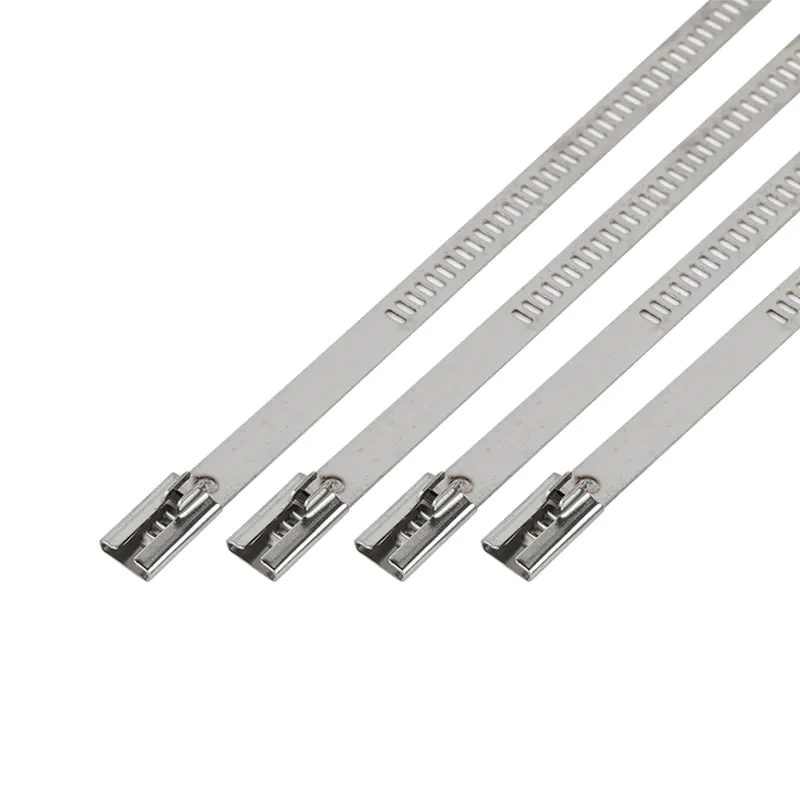Understanding Grades: 304 vs 316 Stainless Steel Cable Ties Explained
Choosing between 304 and 316 stainless steel cable ties is one of the most important decisions for anyone needing durable, corrosion-resistant fastening.
Pick the wrong grade, and you risk premature rust, breakage, or costly replacements—especially in marine or chemical environments.
Every day, people search “304 vs 316 stainless steel cable ties”, asking:
Which grade resists saltwater better?
Is 316 worth the extra cost?
Can 304 be used outdoors?
This guide breaks down composition, performance, key differences, and ideal applications—all aligned with high-search Google topics—to help you choose the right stainless steel cable tie.
What Is 304 Stainless Steel Cable Tie?
Composition
304 stainless steel, also known as “18/8 stainless,” is the most common and economical grade used for cable ties. It offers an excellent balance between strength, corrosion resistance, and cost.
| Element | Typical Percentage | Function |
| Chromium | 18% | Forms protective oxide layer to resist rust |
| Nickel | 8% | Adds toughness and flexibility |
| Molybdenum | 0% | (Absent) — limits saltwater and chemical resistance |
Key Traits
Corrosion Resistance: Suitable for dry, indoor, or mildly outdoor environments (resists humidity but not saltwater).
Temperature Range: -40°F to 1,400°F (-40°C to 760°C).
Tensile Strength: 50–250 lbs (depending on size).
Cost: $0.50–$4 per tie — budget-friendly option.
Best for: Electrical installations, HVAC systems, factory wiring, or general indoor use.
What Is 316 Stainless Steel Cable Tie?
Composition
316 stainless steel is often called “marine-grade” because of its superior corrosion resistance. Its main advantage lies in the addition of molybdenum.
| Element | Typical Percentage | Function |
| Chromium | 16% | Forms protective rust-resistant layer |
| Nickel | 10% | Improves toughness and durability |
| Molybdenum | 2–3% | Protects against saltwater, acids, and harsh chemicals |
Key Traits
Corrosion Resistance: Excellent—ideal for marine, coastal, and chemical applications.
Temperature Range: -40°F to 1,500°F (-40°C to 815°C).
Tensile Strength: 50–250 lbs, with greater fatigue resistance.
Cost: $0.80–$6 per tie — higher upfront cost, longer lifespan.
Best for: Marine vessels, offshore platforms, chemical plants, and outdoor installations near the ocean.
304 vs 316 Stainless Steel Cable Ties: Comparison Table
| Factor | 304 Stainless Steel Cable Ties | 316 Stainless Steel Cable Ties |
| Corrosion Resistance | Moderate (not for saltwater/chemicals) | Excellent (resists saltwater & acids) |
| Molybdenum Content | 0% | 2–3% |
| Temperature Range | -40°F to 1,400°F | -40°F to 1,500°F |
| Tensile Strength | 50–250 lbs | 50–250 lbs (higher durability) |
| Outdoor Lifespan | 5–10 years (mild climates) | 15–20+ years (marine/coastal) |
| Typical Cost | $0.50–$4 per tie | $0.80–$6 per tie |
| Best For | Indoor / mild outdoor | Marine, chemical, or coastal use |
Which Resists Saltwater & Corrosion Better?
Winner: 316 Stainless Steel Cable Ties
304 in Saltwater: Chlorides in saltwater break down the oxide layer, causing pitting corrosion within a year.
316 in Saltwater: Molybdenum prevents chloride attack, allowing 316 to last 15–20 years even on offshore rigs.
If your project involves salt, moisture, or chemicals—always choose 316.
Is 316 Stainless Steel Worth the Extra Cost?
Yes, if your environment is harsh.
| Environment | Recommended Grade | Expected Replacement Cycle | Cost-Effectiveness |
| Indoor / mild outdoor | 304 | Every 8–10 years | Best budget choice |
| Marine / coastal | 316 | 15–20 years | Long-term savings |
| Chemical / industrial | 316 | 10–15 years | Prevents frequent failures |
While 316 costs more initially, it eliminates frequent replacements in tough environments—saving money long-term.
Can 304 Stainless Steel Be Used Outdoors?
Yes—but only in mild conditions.
Ideal: Non-coastal, low-humidity, or shaded areas (e.g., solar panels, garages).
Not Ideal: Coastal zones (within 10 miles of sea) or regions with salted roads in winter.
If your project faces salt spray, road salt, or chemical exposure, upgrade to 316.
How to Choose the Right Grade
Follow this quick 3-step guide based on Google’s most searched use cases:
Step 1: Identify Your Environment
Indoor/dry: 304
Mild outdoor: 304
Marine/coastal/chemical: 316
Step 2: Consider Longevity
Short to medium-term (≤10 years): 304
Long-term (15–20 years+): 316
Step 3: Match Your Budget
Tight budget: 304
Willing to invest for reliability: 316
FAQ
Only in harsh environments. 304 performs well indoors but corrodes in saltwater or chemical exposure.
Q2: Can 316 be used indoors?
Yes, but unnecessary—it’s overkill for indoor use unless exposure to chemicals or heat is expected.
Q3: Do both have the same tensile strength?
Yes. Both range from 50–250 lbs; the difference lies in corrosion and fatigue resistance.
Q4: Which is more heat resistant?
316 has a slightly higher temperature limit (1,500°F vs 1,400°F), making it better for high-heat environments.
Final Thoughts
Both 304 and 316 stainless steel cable ties are strong and reliable—but they’re built for different worlds.
Choose 304 for general-purpose, indoor, or mild outdoor use.
Choose 316 for marine, coastal, or chemical-heavy environments.
Choosing the wrong grade—especially using 304 near saltwater—leads to rusted, failed ties and costly rework.
By matching your environment, longevity needs, and budget, you’ll ensure your cable ties last for decades.





